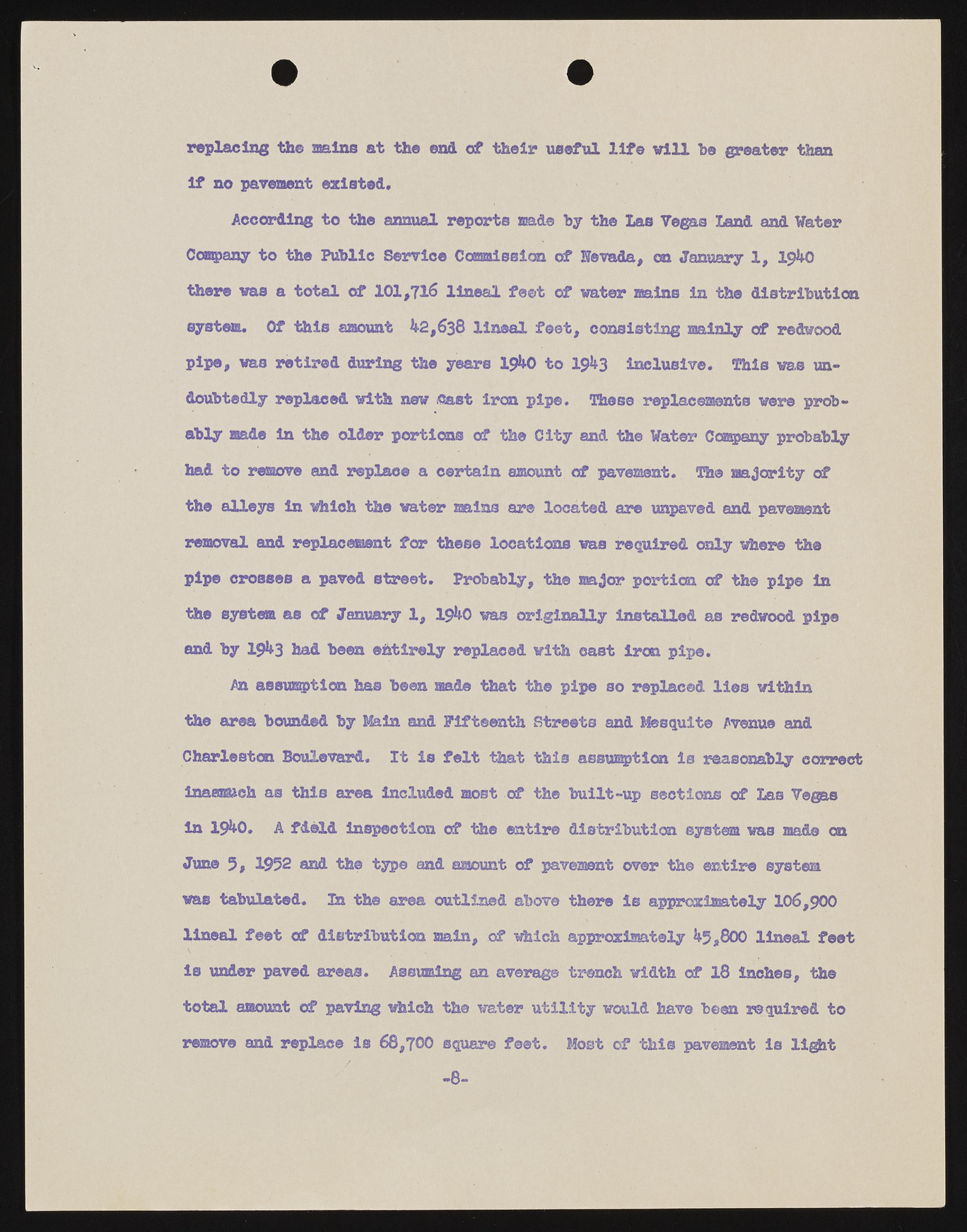Copyright & Fair-use Agreement
UNLV Special Collections provides copies of materials to facilitate private study, scholarship, or research. Material not in the public domain may be used according to fair use of copyrighted materials as defined by copyright law. Please cite us.
Please note that UNLV may not own the copyright to these materials and cannot provide permission to publish or distribute materials when UNLV is not the copyright holder. The user is solely responsible for determining the copyright status of materials and obtaining permission to use material from the copyright holder and for determining whether any permissions relating to any other rights are necessary for the intended use, and for obtaining all required permissions beyond that allowed by fair use.
Read more about our reproduction and use policy.
I agree.Information
Digital ID
Permalink
More Info
Rights
Digital Provenance
Publisher
Transcription
replacing the mains at the end of their useful life will be greater **»«« If no pavement existed. According to the annual reports made by the las Vegas Land and Water Company to the Public Service Commission of Nevada, on January 1, I9U0 there was a total of 101,716 lineal feet of water mains In the distribution system. Of this amount 42,638 lineal feet, consisting mainly of redwood pipe, was retired during the years 1940 to 1943 inclusive. This was undoubtedly replaced with new Cast iron pipe. These replacements were probably made in the older portions of the City and the Water Company probably had to remove and replace a certain amount of pavement. The majority of the alleys in which the water mains are located are unpaved end pavement removal and replacement for these locations was required only where the pipe crosses a paved street. Probably, the major portion of the pipe in the system as of January 1, 1940 was originally installed as redwood pipe and by 1943 had been entirely replaced with oast iron pipe. An assumption has been made that the pipe so replaced lies within the area bounded by Main and Fifteenth Streets and Mesquite Avenue and Charleston Boulevard. It is felt that this assumption is reasonably correct inaeueich as this area included most of the built-up sections of Las Vegas in 1940. A field Inspection of the entire distribution system was mada on June 5, 1952 and the type and amount of pavement over the entire system was tabulated. In the area outlined above there is approximately 106,900 lineal feet of distribution main, of which approximately 45,800 lineal feet is under paved areas. Assuming an average trench width of 18 inches, the total amount of paving which the water utility would have been required to remove and replace is 68,700 square feet. Most of this pavement is light

